 Congratulations to Lorena Hawkins of Salem, OR, and Sarah Ensign of Salt Lake City, UT, who tied this quarter as recipients of our quarterly scholarship award. Each will receive $2,000 to assist them in completing their Occupational Therapy education, Sarah intends to graduate in May 2015 from the University of Utah, and Lorena will graduate in August of 2015 from Pacific University. The SPARC judges unanimously agreed that the essays written by Lorena and Sarah embodied the “spirit of Ensign.” Read their essays below…we think you will agree!
Congratulations to Lorena Hawkins of Salem, OR, and Sarah Ensign of Salt Lake City, UT, who tied this quarter as recipients of our quarterly scholarship award. Each will receive $2,000 to assist them in completing their Occupational Therapy education, Sarah intends to graduate in May 2015 from the University of Utah, and Lorena will graduate in August of 2015 from Pacific University. The SPARC judges unanimously agreed that the essays written by Lorena and Sarah embodied the “spirit of Ensign.” Read their essays below…we think you will agree!
By Sarah Ensign, OT Student, University of Utah Division of Occupational Therapy, Salt Lake City, UT, Grad Date: 05/08/15
I sat in anticipation, waiting for the show to start. The sky around me was darkening. As I gazed upward I saw the first few stars of the night sparkling bright. Only a few stars, not quite dark enough yet. I glanced around me and saw many families sprawled across the lawn. Other children seemed just as excited as me for the fireworks! I saw several children playing glow stick tag while others were admiring the fountains, flowers, tanks, and other small fireworks some families had brought for entertainment while awaiting the grand show. I noticed a few fire trucks across the golf course, ready in case anything happened to go wrong. One year a small tree had caught on fire, but it was quickly put out. A cool breeze ran through my hair, causing me to shiver slightly. Almost time, I could feel it. Even though this was a small town fireworks show, it was one of my favorites. I saw some dark figures moving, preparing to light the first fuse. First a spark, a few quiet seconds, and then BANG. I jumped as a blinding light and deafening sound shot out across the lawn. BANG. BANG. BANG. Panicked parents grabbed their children and started to run as they realized what was happening. The firework show had begun, but instead of being launched into the sky above us, they were exploding on the ground. Flashes of green, red, gold, and purple lit up the air as I ran to safety with my family. The firemen scrambled to pull out their hoses and rushed to help get people out of harms way. It was the fastest, scariest, but most breathtaking fireworks show I had ever seen. Everything exploded in a matter of a few brief, alarming minutes. Thankfully no one was hurt and the firemen got everything under control. I wondered what had caused the fireworks to explode on the ground. What had gone wrong?
I later heard someone explain that one of the fireworks had fallen over and exploded on the ground, which ignited all the other fireworks and caused them to explode. That fourth of July was the most memorable I have ever had. Since that day, I have reflected on that night many times. But it wasn’t until I started studying occupational therapy that I recognized the lessons I learned that night apply to more than just fireworks shows. They are lessons that apply to me as a future health care professional.
Lesson 1: To light a firework, you first need a spark. I recently performed a needs assessment for a private, Montessori school that currently does not have an occupational therapist. The first day I arrived, many eager teachers greeted me. Their excitement showed on their faces as they told me they already had lots of questions and many students they wanted me to help. Even though I was the one who was supposed to be advocating for occupational therapy, I realized someone else had already created a spark of desire in these teachers. They looked to me in anticipation because I had something they didn’t: an education in occupational therapy. Throughout the semester, I collaborated with them to answer their questions and teach them strategies they could implement to increase their students’ performance in the classrooms. Without that original spark of desire, the teachers may not have been as willing to collaborate with me, and my fieldwork experience at that school would have been very different. Not all of my clients will have that same spark inside of them. Many will be struggling with significant challenges that impact their daily lives and leave them feeling hopeless and in the dark. Some of these challenges will pass quickly while others may last a lifetime. For all of these clients, I can be the spark they need to realize there can still be fireworks in their lives. By sharing my knowledge, experience, and excitement for occupational therapy, I will help my clients achieve their goals, renew their zest for life, and find joy in their daily occupations.
Lesson 2: It takes time for the spark to travel down the fuse before the firework ignites. Fireworks don’t explode the moment they are lit. For safety reasons, every firework has a fuse for the spark to travel on before reaching the chemicals inside the firework, giving people time to distance themselves from harm. Likewise, it takes time for the spark to turn into grand fireworks in therapy. Healing, recovering, learning, changing, and adapting are all processes that take time. Just as I couldn’t expect to know everything about occupational therapy the moment I started OT school, I can’t expect my clients to understand everything all at once. It will take time for them to master a new strategy and increase their performance in their desired occupations. It will be important for me to teach this concept to my clients. I did one of my level II fieldwork experiences in an outpatient pediatric setting. One mother I worked with had the mindset that if she didn’t see immediate results in her daughter, it was the fault of the therapists. She wanted the magical solutions for her daughter. Unfortunately, there are few instant, magical solutions when it comes to therapy. Improvement .It takes time and practice. And then it takes more time and more practice. One limitation to providing enough time and practice comes from our health care system today. Due to therapy caps and reimbursement from insurance, therapists cannot always give clients the time and practice they need. We have to use the limited time we have, even if that time isn’t the most ideal for the client. If I had freedom from corporate limitations in healthcare, I would provide therapy for the amount of time my clients and I determined was appropriate, not the amount the insurance companies dictate. I would love to create an “occupational therapy gym” that follows the model of fitness gyms. I would provide several one-on-one consulting sessions and then clients could access the gym anytime they want with a small membership fee. The OT gym would include equipment and materials for a variety of daily activities and occupations. I would have occupational therapy assistants available to help clients when they came in and I would be available to provide additional consulting sessions to make adjustments to therapy plans as clients make progress towards goals.
Lesson 3: Extra precaution should be taken to make sure the firework has a stable, solid base. To prevent an unsteady, possibly harmful practice, every therapist should have a solid foundation in evidence. Evidence-based research provides therapists with current knowledge about effective and non-effective practices. An evidence based practice creates questions and provides answers. Frequently searching the literature will create a solid foundation of knowledge that therapists can use when needed. I heard a piece of advice at a leadership training that has stuck with me that relates to my future practice as an occupational therapist. The speaker said that when preparing lessons, teachers should saturate themselves with knowledge on the topic and then adapt every lesson to the needs of the students. As a therapist for my clients, I want to saturate myself with knowledge and then adapt to each individual client. Not all pieces of information will apply to all clients. As long as I have a solid foundation in evidence, I will be able to provide my clients with the pieces of knowledge that are specific to them.
Lesson 4: Too much at once is potentially hazardous. More isn’t always better. Too many fireworks exploding at once created a dangerous situation. I’ve learned in my fieldwork experience that this concept applies to therapy as well. When I started my first fieldwork experience, I was eager to share all the new knowledge I’d gained. As I talked to parents about their children, I found myself wanting to share everything all at once. I figured the more I shared, the better. But I was wrong. I quickly learned that too much information at once was complicated and overwhelming to the parents. Parents often failed to implement any of the strategies at home with their children because it was too much for their busy lives. But I found that if I focused on one or two strategies at a time parents were much more likely to understand and be willing to implement strategies at home.
Lesson 5: Be prepared for something to go wrong. Had the firemen not been present and ready for a possible disaster, many people might have been seriously hurt. But because they were prepared for something to go wrong, they were able to act immediately. As therapists, we can expect things to go wrong. Not every therapy session goes as planned. Some days our clients are tired while other days technology breaks down. There are many factors that can cause something to happen that wasn’t part of the original, ideal plan. However, we don’t have to worry as long as we are prepared. I plan on having plan b’s and plan c’s, and maybe even plan z’s. As a therapist, I will need to be flexible and adaptable so I can adjust my sessions according to my client’s needs.
Lesson 6: Even when something goes awry, admire the beauty in it. Even though this firework show wasn’t the typical one, I was still in awe of the brilliance and beauty of the bright lights around me. It was a different beauty than if the fireworks were bursting in the sky amidst the shining stars, but still beautiful nonetheless. As a therapist, I can help my clients recognize that even though their experiences might not be what they ever wanted or expected, they can still find beauty in their lives. I have an aunt whose life suddenly changed one day on a trip in Florida. She was bitten by a mosquito carrying a virus that caused encephalitis. Her brain swelled so much she went into a coma. Thankfully she woke up after a month, but when she did, her legs were paralyzed. She had three young sons and needed to adapt to being a mother in a wheel chair. One day, a few years later, my mom was helping her clean. While my mom was scrubbing the toilet, my aunt said she’d give anything just to be able to scrub her toilet independently again. My aunt realized the beauty of a monotonous, undesirable chore many of us take for granted. My aunt has been an example to me and everyone of finding joy in her situation. Many refer to my aunt now by her nickname- Sunny.
I will soon be making the transition from student to professional. Even though I will no longer be an official student, I will forever be a learner. I love to study, read, and learn from experiences and opportunities. For the past 20 years, I’ve had remarkable teachers share their knowledge and experiences with me to help me learn about various subjects. But most importantly, they’ve taught me the importance of learning and thinking for myself. Soon it will be my turn to share what I have learned with my clients. My desire is to not just impart knowledge, but to provide hope, inspiration, excitement, and joy to my clients through my kindness, sincere concern, and passion for learning. As I utilize these six lessons and all the other lessons I’ve gained from my education and training, I will help each one of my clients ignite the beautiful fireworks inside themselves.
By Lorena Hawkins, OT Student, Pacific University School of Occupational Therapy, Hillsboro, OR, Grad Date: 8/08/15
Answering the question, How do I envision using my education and training to be a spark in the lives of others, is a huge question. I went to school to become an occupational therapist because I wanted to use my training and education to influence people’s lives for the better, to restore hope in a place where hope might be only but a distant thought, to help others restore a life which has been interrupted due to illness or injury, and to offer dignity in a situation and time when dignity may be lacking due to the need for cares.
I am the daughter of two high school graduates from a small town in Eastern Oregon. I am the sister of two high school graduates from the same small town in Eastern Oregon, and I will be the first one to graduate with this amount of education in both my immediate family and my extended family. While I have enjoyed where my passion for learning has lead me, and the level of degree as a doctor of occupational therapy, I still hold a deep passion for rural health and reaching the underserved population in our rural communities. I will be using my education and training to further direct service opportunities for all rehabilitation services in rural areas with a focus of tele health as a support for those services.
My practice philosophy will define occupational therapy as, “the restoring of a life that has been interrupted or impaired. It is the restoring of the whole person through equality of partnership in therapy as areas of concern which prevent participation in meaningful and purposeful activities are identified and solved.” My clients will be those who come from all stages of life, all walks of life, and from all corners of the world. Their challenges are multifaceted and may pose physical, emotional, cognitive, and or spiritual barriers that prevent them from fully participating in their lives. They come to us in in partnership to address their challenges and to learn how to reengage in their wants and desires of performance. I will strive to provide individual client-centered therapy addressing barriers and supports of occupational participation. My desire is to provide a holistic approach to the client by learning who they are, what they like to do, and where they do the things they like to do through interview and conversation. Once these aspects are learned, we stand in the gap between desires and doing by educating and problem solving through interventions that and meaningful occupation based therapy.
The values which drive my practice as a future therapist will be:
- All individuals are afforded the respect due them based on who they say they are.
- Restorative therapy is a partnership between myself and the client and obtained through open, honest, and informative communication.
- Individuals have the right to refuse service without judgment after expressing concerns and fears about participation openly and honestly from each side of the discussion.
- Therapy is not a secret. Clients will be informed as to why they are doing what they are doing.
Finally, I am inspired by evidence based practice and research. Evidence based practice is the lens in which all models and frameworks must pass through on their way to existence, gives me a place to learn and grow as a practitioner, and affords me the opportunity to synthesize my knowledge and reasoning. My spark will be displayed in many ways and reach many people once I complete my goal which has been fueled by a passion for learning. For my clients it will be a spark of knowledge and insight to those opportunities for us to work together as we restore or adapt to life after interruption. For my nieces and nephews, I will be a spark which represents the importance of never giving up on education and the career and quality of life which can be gained through education. For myself, I will be a spark of accomplishment and confidence based on completing a long standing goal and never giving up. This spark will then be transferred to my clients to barrow when their confidence and belief is faltering.
Honestly, I am not a great prose writer. Nor am I 4.0 student, but I do care. I care so much for my clients and their situation which they are facing. I have a passion for the therapy that has taken dedications to see come to pass. It excites me to know I get to spend the rest of my life, as being an occupational therapist is really a lifelong career, influencing therapy. Not just among colleagues and patients but also on a political level through advocacy for the profession. The future is brighter than a spark for me. For me, the future is a star. The amazing thing about a star is this: the spark/event which created the light we view at night has long burned out. but we still see the evidence of that spark all these many light years later. In essence when we view the stars at night, we are looking at a memory. I so long to be such a spark for a client, and their family, that when they look back on the event of us meeting it is only a light shining of a memory in a dark time.
 As part of the Abilities Care Approach to Dementia, the SLPs in Northern Pioneers are working to create a specialty program to better assess pain in people with dementia. The Northern Pioneers’ facilities are triggering high in the Quality Measures of pain management for long- and short-stay residents. Recently, the cluster SLPs held a skills workshop on the use of a standardized test to support this work: the FLCI, or Functional Linguistic Communication Inventory. Park View Post Acute’s Director of Rehabilitation, Jennifer Raymond, is leading this pilot program.
As part of the Abilities Care Approach to Dementia, the SLPs in Northern Pioneers are working to create a specialty program to better assess pain in people with dementia. The Northern Pioneers’ facilities are triggering high in the Quality Measures of pain management for long- and short-stay residents. Recently, the cluster SLPs held a skills workshop on the use of a standardized test to support this work: the FLCI, or Functional Linguistic Communication Inventory. Park View Post Acute’s Director of Rehabilitation, Jennifer Raymond, is leading this pilot program.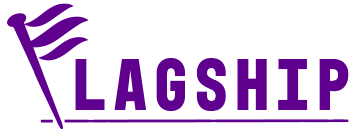

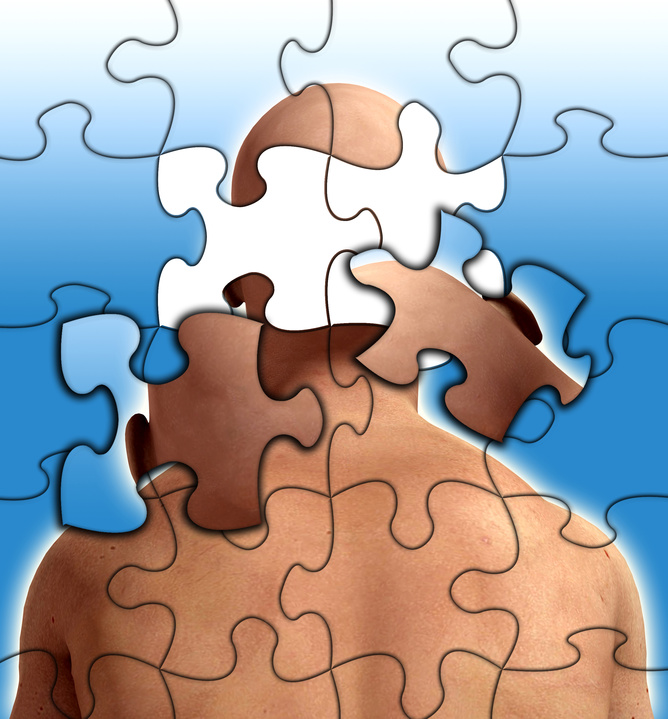
 ingful activities to engage the resident and redirect their behaviors?
ingful activities to engage the resident and redirect their behaviors?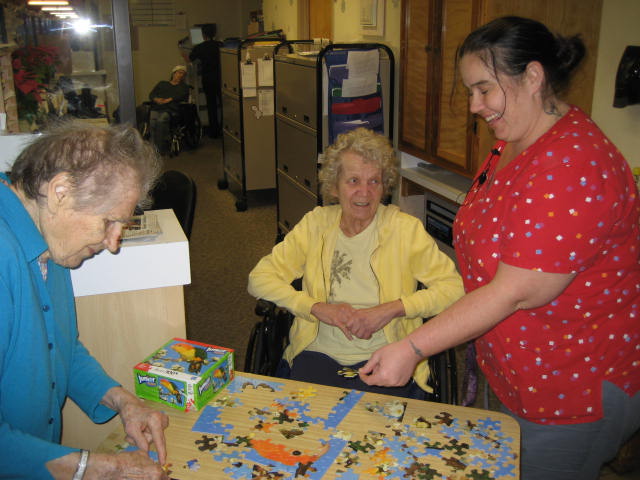



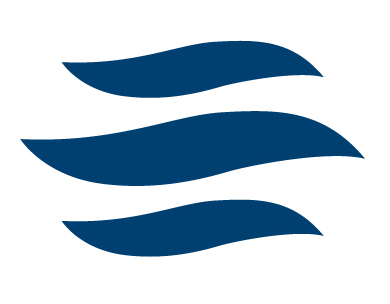



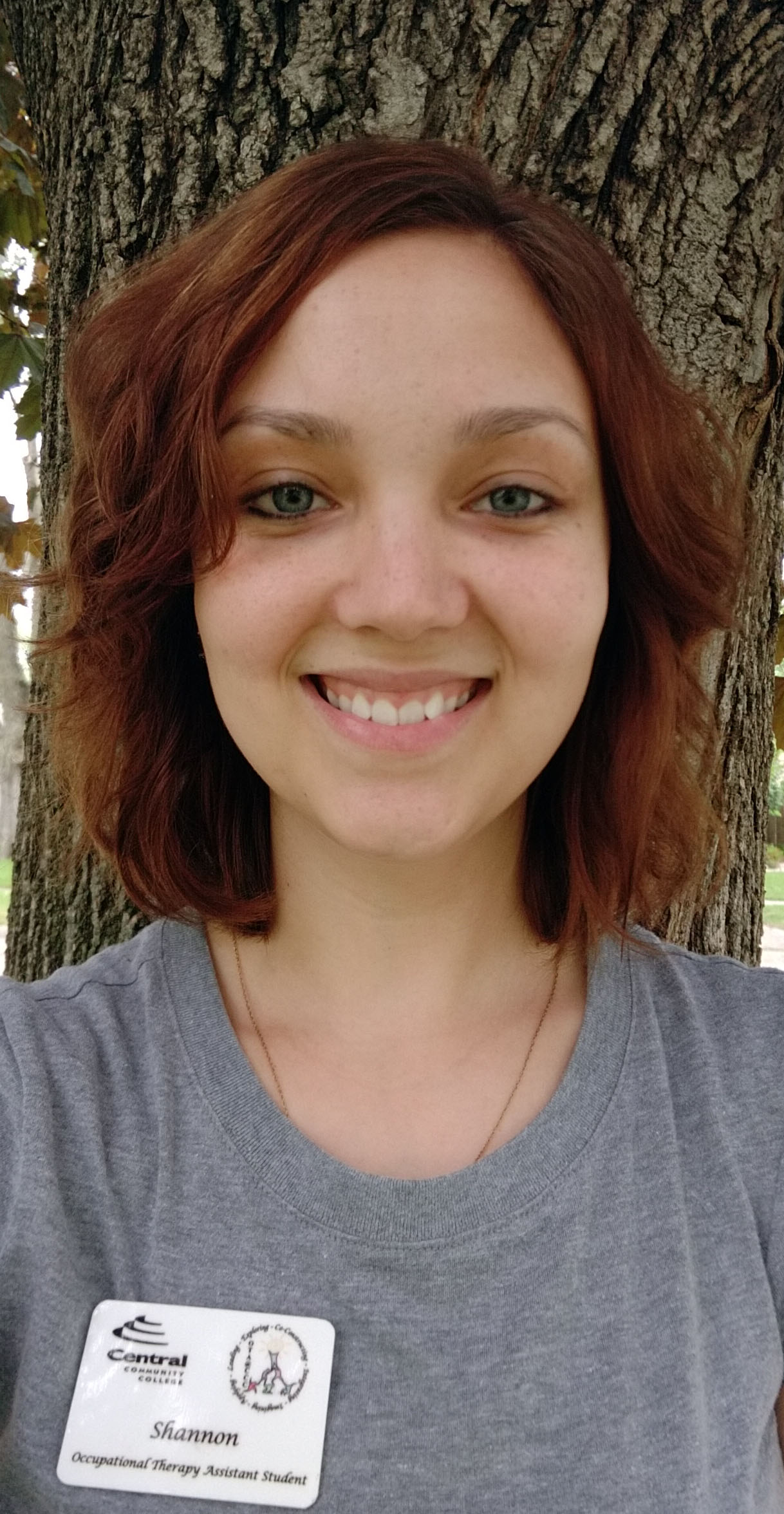
 Shannon Cook is the most recent winner of Ensign’s SPARC award of $2,000. Shannon is currently completing her last year of the Occupational Therapy Assistant Program at Central Community College in Grand Island, Nebraska. She has demonstrated a love of serving those in need through her many volunteer experiences, including Project Homeless Connect, Opportunity House, and the Veteran’s Home of Grand Island Meals on Wheels programs. Shannon is highly regarded by her professors and her fieldwork supervisors and promises to be a wonderful asset to the occupational therapy profession.
Shannon Cook is the most recent winner of Ensign’s SPARC award of $2,000. Shannon is currently completing her last year of the Occupational Therapy Assistant Program at Central Community College in Grand Island, Nebraska. She has demonstrated a love of serving those in need through her many volunteer experiences, including Project Homeless Connect, Opportunity House, and the Veteran’s Home of Grand Island Meals on Wheels programs. Shannon is highly regarded by her professors and her fieldwork supervisors and promises to be a wonderful asset to the occupational therapy profession. 

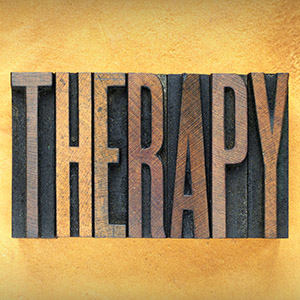
 At Veranda Rehabilitation and Healthcare in Harlingen, Texas, there is no greater incentive for our therapists to persevere through difficult cases than to see patients returning home to carry on with their lives. In the example of one client, admitted to Veranda with a gunshot wound to the mouth and presenting with ETOH abuse, B nephrolithiasis, malnutrition, liver cirrhosis and other symptoms, it was clear from the start that this patient would require extensive therapy. However, our therapists were up for the task, and his story is just one of many that demonstrates how our commitment to a positive outcome allows us to create a partnership for healing with even the most challenging patients.
At Veranda Rehabilitation and Healthcare in Harlingen, Texas, there is no greater incentive for our therapists to persevere through difficult cases than to see patients returning home to carry on with their lives. In the example of one client, admitted to Veranda with a gunshot wound to the mouth and presenting with ETOH abuse, B nephrolithiasis, malnutrition, liver cirrhosis and other symptoms, it was clear from the start that this patient would require extensive therapy. However, our therapists were up for the task, and his story is just one of many that demonstrates how our commitment to a positive outcome allows us to create a partnership for healing with even the most challenging patients.
